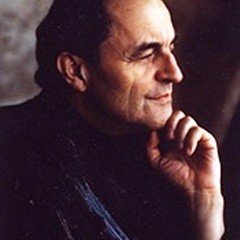|
Back
Brass Batches, Kinetic Keys New York
David Geffen Hall, Lincoln Center
02/03/2016 - & February 4, 5, 6, 2016
Wolfgang Amadeus Mozart: Piano Concerto No. 9 in E-flat Major, “Jeunehomme”, K.271
Ottorino Respighi: Feste Romane – Fontane di Roma – Pini di Roma
Yuja Wang (Pianist)
New York Philharmonic Orchestra, Charles Dutoit (Conductor)

C. Dutoit (© Larry Ho)
”Too much of a good thing is never enough”.
Liberace
That quote might not extend to Ottorino Respighi, A pupil of Rimsky-Korsakov, Respighi’s orchestral color was as dazzling and unsubtle as Botticelli. An Italian nationalist in the age of Mussolini, he believed in the Glory that was Rome, but rarely allowed either bombast or vulgarity to get in the way of magnetic inspiration. And if the glory of Man or God was not his goal (à la Beethoven or Bruckner), he glorified his heritage and his orchestra.
If necessary, I could take an hour or two of his orchestrations, whether Ancient Airs and Dances or The Birds or his classy re-clothing over Bach, Rachmaninoff and Monteverdi. Yet when Charles Dutoit scheduled his three most unfettered, unshackled, brassiest, stringiest, drummiest pieces, Respighi’s particular genius seemed, at the end, a mite cheap. More the stuff of Super Bowl halftime marching than the superb music it can be.
Charles Dutoit is the ideal conductor, of course. The dissonances of the Roman Festivals shook the rafters of David Geffen Hall. He wrote Fountains of Rome twelve years before, and that is a gentle piece, with tinges of Debussy, even Ravel. Where the opening Roman Festivals longed for (and received) great applause, Fountains didn’t have the marching-band nuances, the audience remained silent, and Mr. Dutoit attacked–and I mean that literally–the Roman Pines like Paul Bunyan.
Okay, granted “Catacomb Pines” and the third movement was literally for the birds. Respighi had suggested an electronic recording of a nightingale–he, like Messiaen, was an ardent avian-lover–but the Philharmonic’s birds in this hall sounded like castanets. Did they try to reproduce this in the orchestra?
Once we came to “Pines of the Appian Way,”, Mr. Dutoit let loose in every direction. Respighi’s directions to use a buccina was a ridiculous one, since we can only image it as a sort of Jewish shofar. (George Bernard Shaw once specified the instrument in his Caesar and Cleopatra, but didn’t expect much from it.) So instead, Mr. Dutoit put a mass of brass up into both sides of the second balcony. Specifically, two flugelhorns, four Wagner tubas, three trumpets and three trombones.
They made a mighty sound, though didn’t burst the eardrums the way Berlioz does in his Requiem. Respighi gave many a chance for other soloists. And it is difficult to understate the beauty of Concertmaster Frank Huang, or the so, so sensitive playing of Clarinetist Anthony McGill in Fountains.
The whole orchestra, though, responded to Mr. Dutoit’s still enthusiastic conducting. After all these years, he leaves nothing to chance.

Y. Wang (© Courtesy of the artist)
And I am so happy to not write that “Yuja Wang’s Mozart was a sensitive contrast to the Respighi.” Ms. Wang has a personality which is so forceful, so personal that even this mid-Mozart Ninth Concerto burst wide open.
Alfred Brendel called it “one of the greatest wonders of the world”, and Ms. Wang played it as a masterpiece. Ignoring the fact that this was probably originally written for harpsichord, she played the keys with fluid brilliance in the cadenzas and the endless runs of the Presto finale. But she was equally forceful in those opening measures (a Mozart innovation) In the first movement, Ms. Wang swooped down to play her notes, offered kind of Berlioz color with the two horns, and was actually athletic in that Mozart cadenza, one of three.
The Andantino could be taken much slower, so deep is the feeling, but Messrs Dutoit and Wang kept the tempo going to the actual anguish before the second cadenza.
When living in Hong Kong, I made several trips to the Shanghai Conservatory, and am thrilled to say that Ms. Wang breaks all the rules. Where they are going for sheer brilliance, Yuja Wang has a wicked sense of humor. This was in the middle of the Presto movement, which has (what I feel) is a dull, dull minuet and variations in the middle. Ms. Wang exaggerated the gentle dance, turned that slowish section into a piss-elegant choreography so she could continue onto a heroic finale.
More than that, the encore was sheer show-business pizzazz. The Turkish dance from K. 331 was given a wildly acrobatic rendition. Funny, ironic and, a delightful reflection of Yuja Wang’s singular appeal.
Harry Rolnick
|